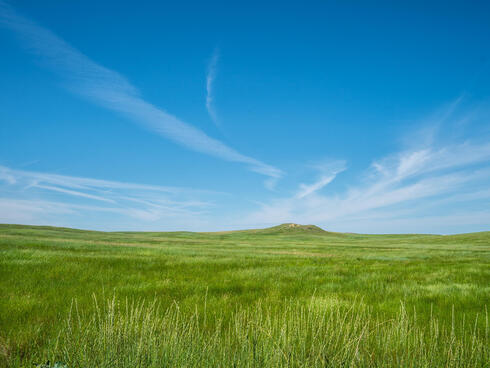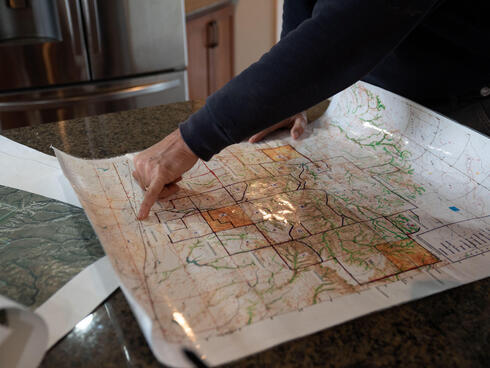



Why ranchers are adopting practices to protect grasslands with WWF
Casey and Lacey Coulter operate Coulter Family Ranch in central Montana, while raising their children Garrett, Poppy, and Daisy on the place their family homesteaded in 1914.Editor's note: This story was originally published on worldwildlife.org.
Over the past few years, the Coulters have adopted several conservation practices intended to revitalize soil health and grass production, increase water infiltration rates, and adapt their livestock to the land they operate on. In attempting to promote soil biology and reduce disturbance, they have incorporated cover crops, permanent grass plantings, winter grazing, and animal diversity into their operation.
“We always strive to live by the three Ps: people, planet, and profit,” the Coulters said.
Improving ranch biodiversity
The Coulter family began these conservation practices as part of WWF’s Ranch Systems and Viability Planning Network (RSVP) program, which aims to provide a comprehensive support system for ranchers to develop sustainable grazing management plans. Ranchers receive on-the-ground technical support as well as access to continuing education. From workshops to webinars, program participants are learning how to make significant on-ranch changes. These changes are producing positive outcomes that include avoiding grassland conversion, improving carbon sequestration and storage, and improving ecological systems such as water infiltration and biodiversity, and land productivity.

With 57 ranches and nearly 530,000 acres of grassland, the RSVP program is over halfway to reaching its program goal to enroll 1 million acres in the Northern Great Plains by 2025. The program, which began in the fall of 2020, is supported by McDonald’s, Cargill, and the Walmart Foundation, among others.
Water and forage are the two main inputs for a livestock operation, and both are in short supply in Montana thanks to a multi-year La Niña drought. With the support of the RSVP program, in 2021 the Coulters were able to complete the installation of a large stock water storage and delivery system. This system will dramatically increase their grazing flexibility and animal distribution, particularly important in dry years when more frequent cattle rotations are required to avoid damaging grass stocks.
And in 2021, they took a big leap by shifting away from the cow/calf model bringing over 300 Katahdin sheep to the ranch to better use the location’s extensive sagebrush community. It is part of their ethics both as land stewards and business owners to ensure the ranch remains productive even during dry periods.
Protecting grasslands

Ranchers aren’t the only beneficiaries of the program. Grasslands are critical ecosystems that teem with life. In fact, more than half of all our planet’s land is grass-dominated ecosystems, which is why WWF is working to protect these areas. The Northern Great Plains’ grasslands are home to species like the pronghorn, chestnut collared longspur (an endangered songbird), American bumble bee, and sage grouse. They also support the livelihoods of Native nations and other rural and agricultural communities. The impact of this program can be seen across the land and all its inhabitants from people to plants and wildlife.
The program’s success in this past year and a half is even more meaningful considering the numerous obstacles that have arisen since its inception. Ongoing disruptions and rising material costs from the COVID-19 pandemic, high inflation, economic impacts from the war in Ukraine, as well as historic drought in the Northern Great Plains region have made the work challenging for all involved. However, as participating ranchers and WWF staff would attest, the impact of the RSVP program will continue to last well beyond the current generation, making it worth the effort.
All images are courtesy of © Alexis Bonogofsky
TheCattleSite News Desk


